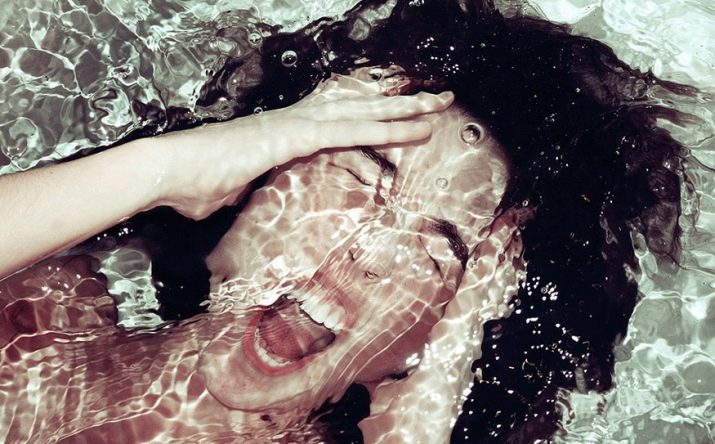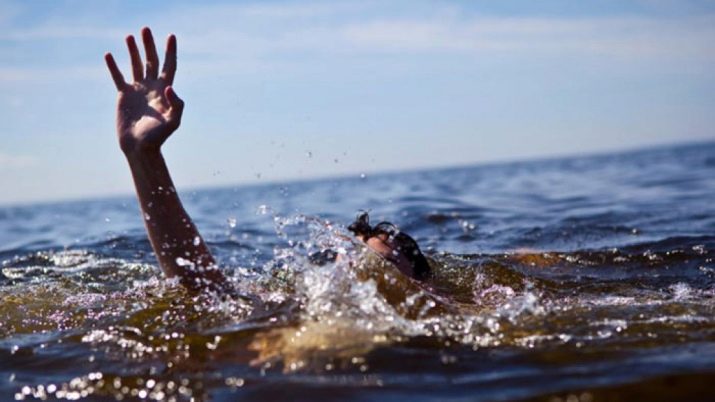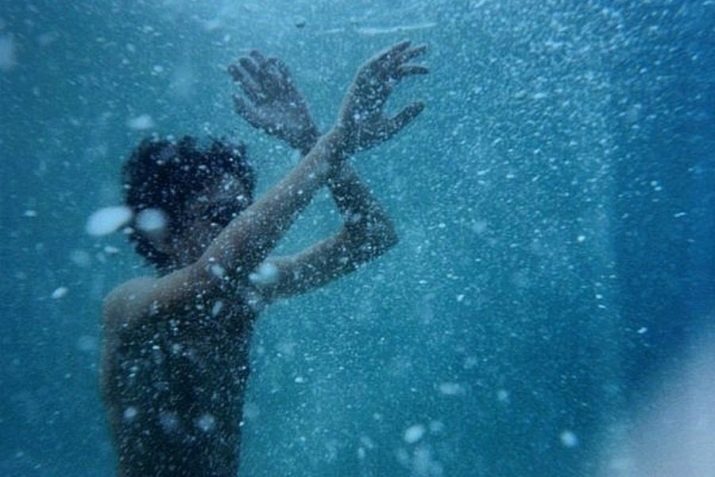Batophobia: features, types and methods of treatment

It's great when there is an open reservoir nearby, you can swim and frolic in it. Every person dreams of such a pastime. But just not everyone likes to swim in dangerous places - where it is very deep. And this is a normal fear, since a person has a sense of self-preservation.
But there are people who are simply terrified of going into the water because of an inexplicable fear. Such individuals are called batophobes.

Peculiarities
There are various phobic disorders associated with water, of which bathophobia stands out the most. This fear is associated with the fear of depth and is one of the manifestations of the fear of death. Human beliefs say that before death, a person often dreams of drowning and being swallowed by a dark abyss.
Without water, no living creature can live long. In the summer, everyone strives to get on vacation at sea. But despite this, people are desperately afraid of the water element. And not without reason: when it becomes uncontrollable, it can take many lives. Therefore, a person has learned this lesson from ancient times and tries not to cross the line of safety. And this is quite normal.
Another thing is when a person has a tendency to obsessive states. When in water, he begins to panic, and this condition causes health disorders. As a result of the development of stress, such a swimmer can drown, even if he can swim well.

And all this will happen because he will quickly develop an irrational fear, which can "fetter" all his thoughts. Then he will simply lose his orientation in space, and everything will end tragically.
There is another category of people who have a very rich imagination. And this number of personalities are prone to phobic disorders. After watching films where people get caught in a storm, and their ship begins to sink, and terrible waves absorb everything in their path, they begin to imagine themselves in the place of these people. Suspicious and impressionable persons are so into the position of passengers in distress that they can no longer control their emotions. The result is panic that occurs out of the blue.
Batophobia only at first glance does not seem to be a very dangerous disease. To avoid it, it is just not worth approaching those bodies of water where it is very deep. However, the mentally disturbed individual will find cause for panic. And such manifestations can seriously affect his health.

Views
The fear of depth falls into two main categories.
- Objective - with her, a person is really in danger. For example, when he fell into a whirlpool and can be pulled into a depth from minute to minute. Also, an objective fear of depth can arise if the vessel, on which there are people, is in serious danger. Then the feeling of self-preservation is triggered, and a general panic begins on the deck.
- Destructive phobia appears as a result of obsessive thoughts that can arise when an individual is at a depth. Perfectly keeping afloat, a person suddenly begins to simulate various negative situations and thereby winds himself up. For example, it seems to him that while swimming, he will have a cramp and he will quickly sink.
In other cases, having watched various programs that talk about floods, an individual, sitting on a sofa at home, imagines that an uncontrollable wave will now cover him. As a result of his invented phobia, he begins to beat in hysterics, and this attack is quite difficult to stop.
This case is the most difficult. And if such manifestations are observed, it is necessary to seek help from a specialist.


Symptoms
With a severe form of phobia, the fear of fear of water may appear even when there is no body of water nearby. It's just that a person begins to gradually wind himself up and imagine the negative consequences of being able to get into the center of the whirlpool. This individual turns non-existent moments in his mind, develops the acuteness of the problem instead of calming down.
As a result of such actions, the body of the batophobe starts a process that provokes the release of a huge amount of adrenaline. The brain cannot handle it. The result of this is the failure of all systems of the human body. Then changes occur that provoke the following symptoms:
- breathing becomes intermittent;
- dizziness and a sharp headache may begin;
- pressure surges occur - it either rises or falls;
- tormented by thirst;
- nausea or a lump in the throat comes;
- sweating of the hands and feet increases significantly;
- double vision is often present;
- disorientation in space begins.
These manifestations are very dangerous for the patient's health and life, therefore, it is necessary to take measures to eliminate the phobia and to improve the work of the whole organism as a whole.

Causes of occurrence
Most phobias come from childhood. And if a person has a very anxious and suspicious temperament, then the risk of a phobia only increases. And character is laid in adolescence. When when a child was abused by adults, did not communicate with his peers, or, conversely, often fell into bad companies, it is highly likely that in adulthood this person will develop some kind of phobia.
Of course, if the life of the same individual develops very well (no stress and various negative stories arise), he will try not to remember bad moments from the past. They will not be able to influence his mood.However, troubles occur in fate that cannot always be overcome and dealt with on their own. For example, you have a terrible dream where a person is drowning in a dark depth, and he is very similar to reality. It is then that the stressful period begins, which leads to an obsessive state.
A person who has a very persistent character and makes volitional decisions is able to avoid severe depression. With the rapid disappearance of such a period, the phobia may not appear. However, there are several other factors that can trigger a fear of depth.

Negative experience
The development of such a scenario is not ruled out. Trouble on the water can happen to every person. For example, some batophobes became addicted to fear after experiencing a seizure while swimming in the sea.... When such a situation occurs and life is "in the balance", then the person already imagines in advance what will happen to him if the tragedy happens.
Having choked with water and losing consciousness, a person receives enormous stress. At the moment of salvation, he is brought to his senses, and the individual involuntarily once again "replays" in his mind the tragedy that happened to him. And then comes the realization of what could have happened to him next if he had not been saved. Awareness of imminent death can drive a person to madness.
People who have experienced such emotions will never be able to forget this horror. It will pop up in consciousness over and over again. This is how the sense of self-preservation works. For some individuals, this fear will remain just fear and will not develop into a more serious condition. Other people who are prone to obsessive moods may have frequent panic attacks.
Therefore, in any case, when a person has been exposed to risks to his life, including batophobes, psychological rehabilitation is needed. And the sooner work begins to eliminate psychological discomfort, the faster the failed drowned man will restore his normal mental and physical state.

Inability to swim
Not all people know how to behave properly on the water. They do not realize that the element can be dangerous, so they often put their lives and the lives of other people at risk. There are times when friends, for the sake of a joke, throw their comrade into the water. They don't even think that their friend can't swim. Once at a depth, a person begins to drown and call for help. Panic ensues.
It's not a fact that his friends can swim well too. While everyone is looking for help, the victim manages to drown and go to the bottom. After rescue, such an individual will take a long time to put his feelings in order, and here's why: the fall into the water happened suddenly, and as we know, the suddenness of an accident significantly affects the development of a negative state.
Irrational fear occurs suddenly and cannot be explained... And an unforeseen case, when a person does not expect anything bad, also arises suddenly. And this relationship is fatal.

Features of the nervous system
They also make a huge difference. Weak and impressionable individuals are always more prone to phobias. As soon as they watch a horror movie or a documentary about how people drown and die, they begin to project this negativity onto themselves.
The picture they see is enough for such people. After that, their fears gradually develop into a more serious condition. When approaching an open source of water, they recall the movie they watched and it seems to them that the abyss will now swallow them.
At this moment, phobic inclinations arise in a person's consciousness. And if he is not able to keep his emotional state in the right direction, then fear will develop very quickly and turn into hysteria.

Methods for getting rid of a phobia
There are many ways to overcome phobic disorders.
Psychotherapist help
It is only necessary to treat a phobia with the help of an experienced psychotherapist, who will first identify the cause of the fear, and then select an individual therapy.
- Hypnotherapy. It implies psychotherapeutic work with a person who is imposed on an altered state, and then his consciousness is exposed to external suggestion. The hypnologist instills in a person that he is no longer afraid of depth.
- Cognitive behavioral therapy (CBT) is a form of psychotherapy. It lies in the fact that psychological problems and neuropsychological disorders are changed with the help of joint and definite work of a specialist and a patient. Batophobe tells his fears, and the doctor corrects his thoughts using a special technique.
- Auto-training also helps to relax a person's mind and tune in to positive.
- Neuro-linguistic programming Is a part of practical psychology that develops applied techniques that adopt the experience of psychotherapists and masters of communication. Verbal suggestion can make an individual stop fearing deep bodies of water.
- If the disease is serious and has an advanced form, then drug therapy is prescribed. Only this issue should be resolved by an experienced specialist, otherwise uncontrolled intake of drugs will lead to unforeseen consequences.


Learning positive information about water
In addition, you can use parallel methods to reduce anxiety. You need to watch more programs about the depths of the sea or about those inhabitants that are found in rivers and lakes. You just see the underwater world and look at the water with different eyes. The element of depth is so rich and colorful that you will no longer have thoughts of fear of this miracle of nature.









